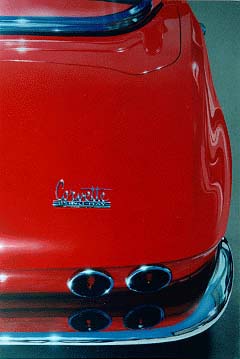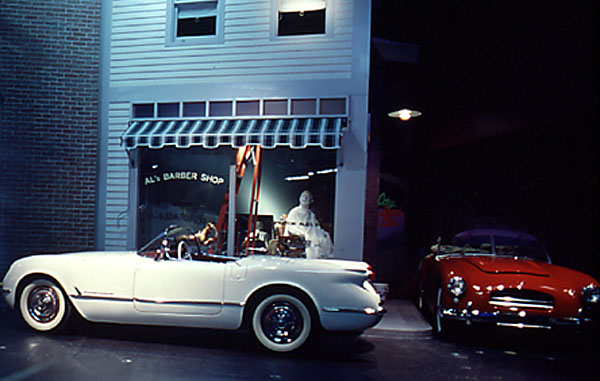After World War II, America was experiencing a prosperity that it had not felt in a long time. The economy was thriving, people were settling into new jobs and new homes. Overall, the country was in an upswing. The roads in the states were vastly improved from the war effort. Furthermore, a new phenomenon was penetrating the American psyche: suburbia. With the population of America leaving the cities, it was time for the automobile to move in and transport the men and women around.
The affluence that people were experiencing was embodied in the GM art and color department head, Harley Earl. He wanted to design cars that made people envision a bright future. He saw cars that were more aesthetic and less a functionary vehicle. This went right along with the sentiment of the time. The number of families able to afford the new type of car, one that melded performance and style, was steadily increasing. Indeed, the number of families in middle class was increasing at a rate of 1.1 million each year. In fact, there were 16.6 million families in the middle class in 1956 and 20 million by 1959. This last number was more than half of the families in the US.
The Interstate Highway Act of 1956 was a commitment from the government to pay for 90% of the construction of 41,000 miles of toll-free roads. Between 1947 and 1970 the combined highway expenditures was $249 billion. This building effort left America with a system of roads that could carry people across the nation faster than before. In the end, America was left with roadways that increased the population's mobility by an infinate amount. The roads allowed the average American family the ability to vacation further from home and use their car - greatly cutting the cost of vacationing. It also prompted Detroit to build cars that could traverse the pavement with greater speed and comfort. Cars like the Bel Air, the Mercury Coupe and the Impala. It prompted Detroit to build cars that could compete with the sports cars coming out of Europe. It prompted Detroit to build cars like the Corvette.
The auto industry needed an American car that could match this new found prosperity. People were looking elsewhere, mostly Europe, for quality performance automobiles. The Corvette was designed to appeal to, not only America's superfluous money, but also to the enthusiasts of the world.
One must look at the Corvette as a sign of the times. People were branching out of the cities, extending further and further into suburbia. Also, the extensive road network was making it possible to travel farther, faster. Indeed, Route 66 was the epitome of the American spirit. The open road...the convertible Corvette...one could go anywhere. And fast.
With the new technology that was readily becoming available, the Corvette was fashioned into a speed machine by 1955. With the introduction of the V-8 in '55 and a new tranny in '56, the Corvette gave people to power they demanded.
[Home]

